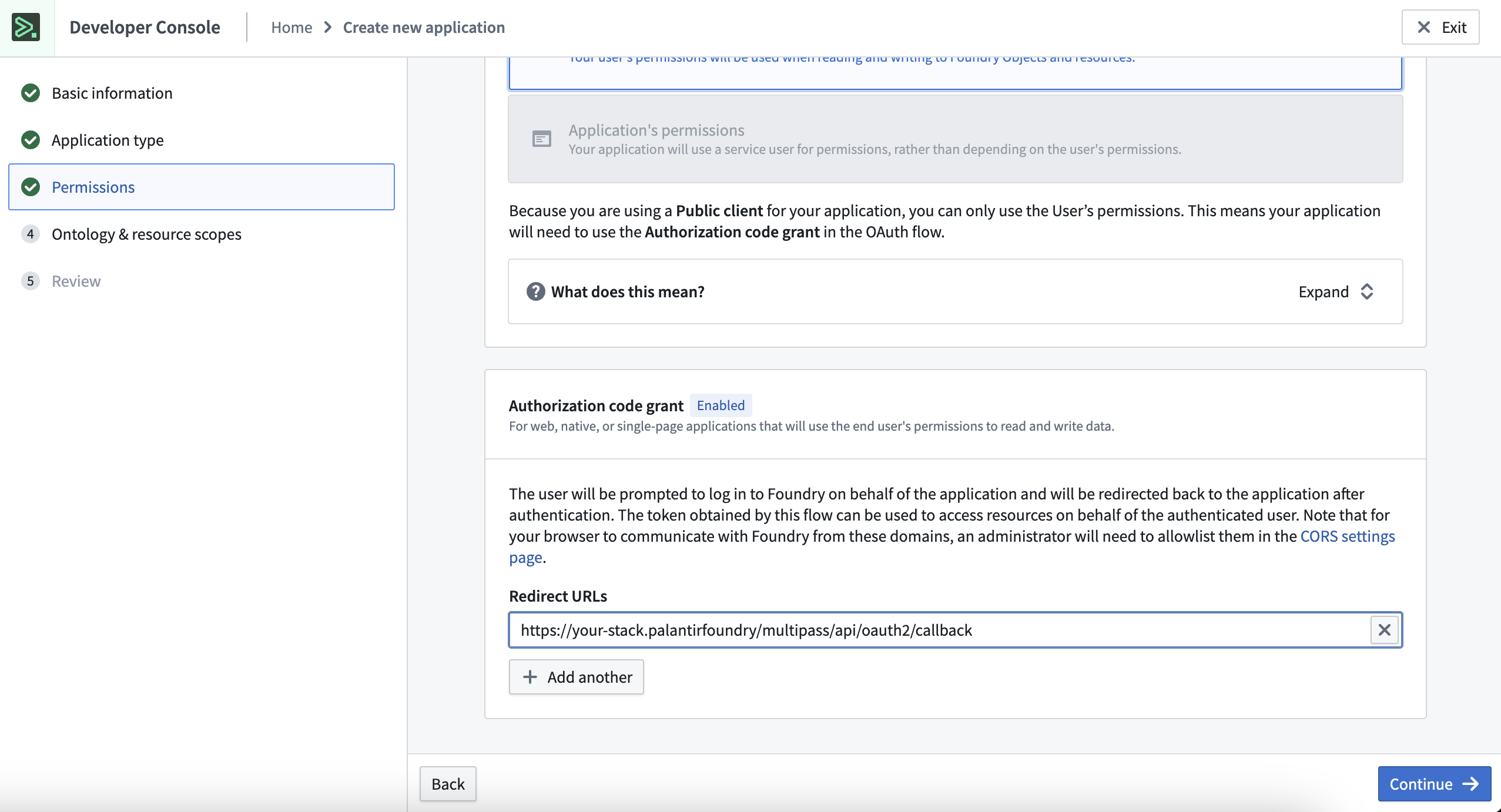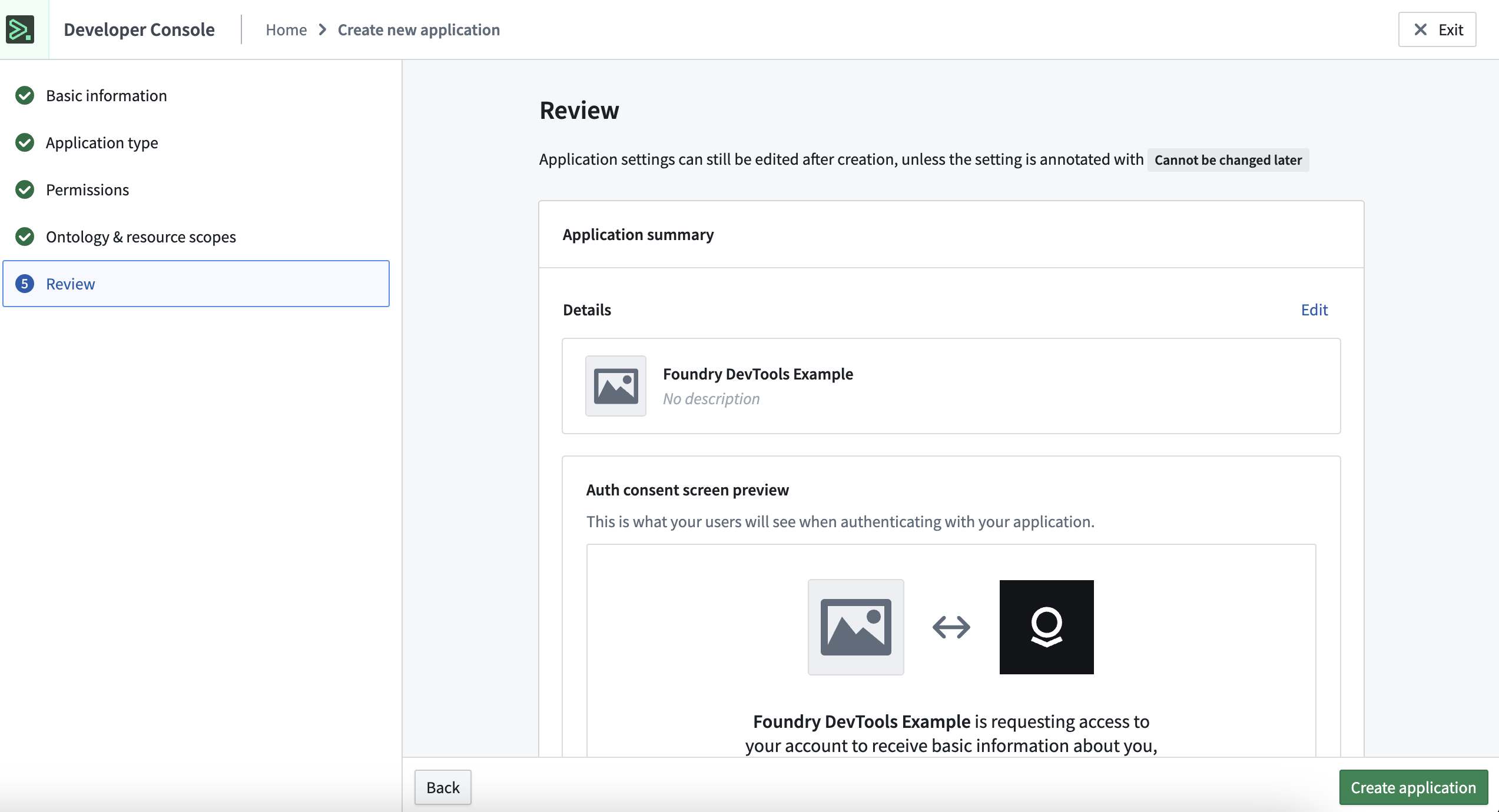SSO Authentication#
The recommendation how to connect to Foundry from Foundry DevTools is using the Third Party Application Feature in Foundry. With this approach, no long-lived user tokens need to be generated.
You can create a Third Party Application in Foundry which is used for authenticating users.
The actual oauth2 flow is implemented by the Palantir provided Python library palantir-oauth-client.
Once a function of foundry-dev-tools is run to access data sitting in Foundry, the auth process is started.
Example Configuration via the Developer Console:#
Create a new Application
Fill out the Basic Information
Select client facing Application

Continue and scroll down to Authorization Code Grant, make sure to set the Redirect URLs to
https://<stack-url>/multipass/api/oauth2/callback
Deselect Ontology SDK and enable the Application for your Organization

Review your Application and create the application.

To authenticate with this Third Party Application you need to set the client ID in your Configuration
If you have set a user-token previously, delete the jwt entry of the configuration.
You can use the following code to test the authentication - this flow will also be triggered with any API call to Foundry:
from foundry_dev_tools import FoundryContext
ctx = FoundryContext()
ctx.multipass.get_user_info()
Steps:
Execute the above lines - a message with a URL will appear - visit this URL in your browser
Once opened, log in to Foundry (if necessary) using your account and allow application
Copy the authorization code to the prompt of your Python commands and press Enter
The result of get_user_info() should appear, showing your Foundry user information.
At this point your temporary credentials are stored locally and will be used for future calls to Foundry.